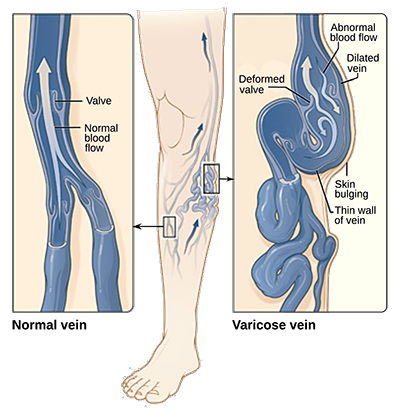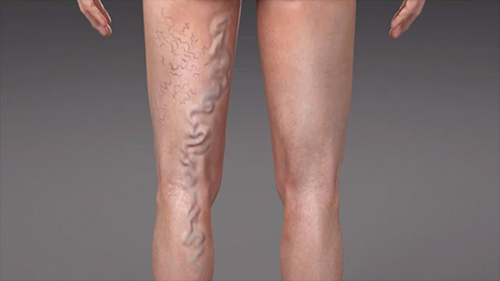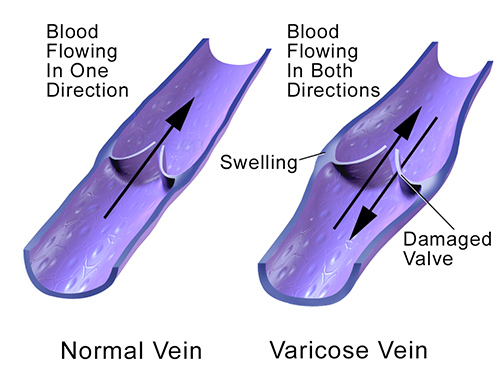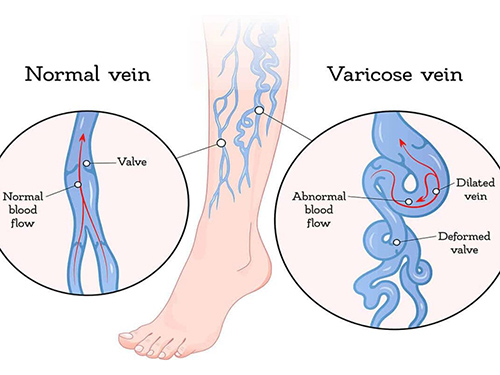What are varicose veins? This question is essential to many people suffering from this condition. In this article, you will learn more about the symptoms, and we will answer the question (are varicose veins dangerous), when to worry about varicose veins, and a lot more. This unsightly affliction is also known as spider veins or leg veins. Before we get into (what are varicose veins?), let’s learn a little about the particular veins stricken with this ailment.

Veins transport the blood from the capillaries back to the heart in ever-enlarging vessels. When standing, the legs’ veins must work against gravity. Since the heart cannot force the blood through the capillaries back to the heart, the various flow is aided by the muscles’ pumping action and a series of one-way valves within the veins that prevent back-flow.
Typically, the term varicose applies to conspicuous, unsightly veins appearing just under the skin of the legs. These veins became dilated and tortuous from increased volume and blood pressure. Why this condition develops is not fully understood. Still, defective one-way valves that allow back-flow, an inherent weakness in the vein wall that allows stretching, or both are probably the causes of this condition.

While an estimated 10 percent of all adults have conspicuous varicose veins, the problem occurs twice as ordinary in women as in men. Most varicosities develop before the age of forty and tend to persist after that. Pregnancy, overweight, tight leg garters and pelvic tumors influence this condition. Standing still for long hours may also contribute to varicose veins in susceptible people.
Usually, varicose veins are a benign condition. However, aching in the leg, swelling of the foot and ankle, eczema of the skin with itching and scaling, and a varicose ulcer just above the ankle may develop if not correctly cared for. Ulcers are hard to heal and may persist. A serious problem, phlebitis, occasionally occurs when the vein lining becomes inflamed and a clot forms.
Internal varicose veins may occur in the rectum or occasionally in the esophagus near the point it enters the stomach. Rectal varicose veins, commonly called hemorrhoids, are readily detectable and effectively cured by surgery. The varicose veins in the lower end of the esophagus are neither easy to detect nor treat. Their presence usually remains unknown until they rupture, causing a severe hemorrhage. They commonly develop as a complication of cirrhosis of the liver.
What are Varicose Veins?: Prevention and Treatment

If you suffer from moderately severe varicose veins, some simple, common-sense procedures will be helpful. They may even answer questions about preventing varicose veins and developing an ulcer. The first thing is to avoid stationary standing for long periods. Move your legs every few minutes to keep your leg muscles compressing the enlarged veins, thus pumping blood.
Several times a day, lie down and raise your legs above the level of your heart. Wear elastic stockings to compress the veins and keep the blood from stagnating. Walk to improve the circulation in your legs. Do not sit down with your legs crossed; this restricts blood flow through the superficial veins.
Should your skin break down or an ulcer develop, consult your physician. He or she can suggest hot-and-cold foot and leg baths taken twice daily: two and a half minutes in hot water, alternating with half a minute in cold water, repeated five times. After each treatment, dry the skin gently and thoroughly.

Finding the right physician is crucial to treating this condition and relieving pain. Please type the words (varicose veins treatments near me) and (varicose veins doctor specialist) into the Google search engine. A litany of results will emerge, allowing you to make an educated and informed decision.
Apply a mild antiseptic ointment for varicose ulcers and cover with a sterile but firm-fitting bandage. For troublesome cases, surgical removal of the varicose veins, called stripping, is the most satisfactory treatment. Another procedure is to inject a sclerotherapy solution into the veins and wrap the limb firmly for a few days. After a stripping or injection treatment, walk as much as possible to accelerate healing.
Other therapies you can look into are varicose veins treatment creams and laser treatment for varicose veins. You can find creams online or topical creams at your local CVS, Walgreens, or Walmart. As mentioned, you can find a reputable laser treatment facility and specialist using the keywords (laser vein centers near me.) [what are varicose veins?]
DISCLAIMER: All content on this website is presented solely for educational and informational objectives. You should not rely on the information provided as a replacement for advice, diagnosis, or treatment from a qualified medical expert. If you are pregnant, nursing, or have any preexisting medical concerns, you should talk to your doctor before using any herbal or natural medicines.
REFERENCES
- Hardinge, Mervyn G and Harold Shryock. “Family Medical Guide.” Hardinge, Mervyn G and Harold Shryock. Family Medical Guide. Ed. Marvin Moore and Bonnie Tyson-Flynn. Vol. Three. Oshawa; Washington, D.C.; Hagerstown: Pacific Press Publishing Association; Review and Herald Publishing Association, 1999. Three vols. 49, 50. Print. [what are varicose veins]
- Journal of Vascular Surgery: Sclerotherapy for Varicose Veins
- American College of Phlebology: Treatment Options
- National Institute of Diabetes and Digestive and Kidney Diseases: Pregnancy and Varicose Veins
- American Diabetes Association: Diabetic Foot Complications
Last update on 2025-06-04 / Affiliate links / Images from Amazon Product Advertising API





